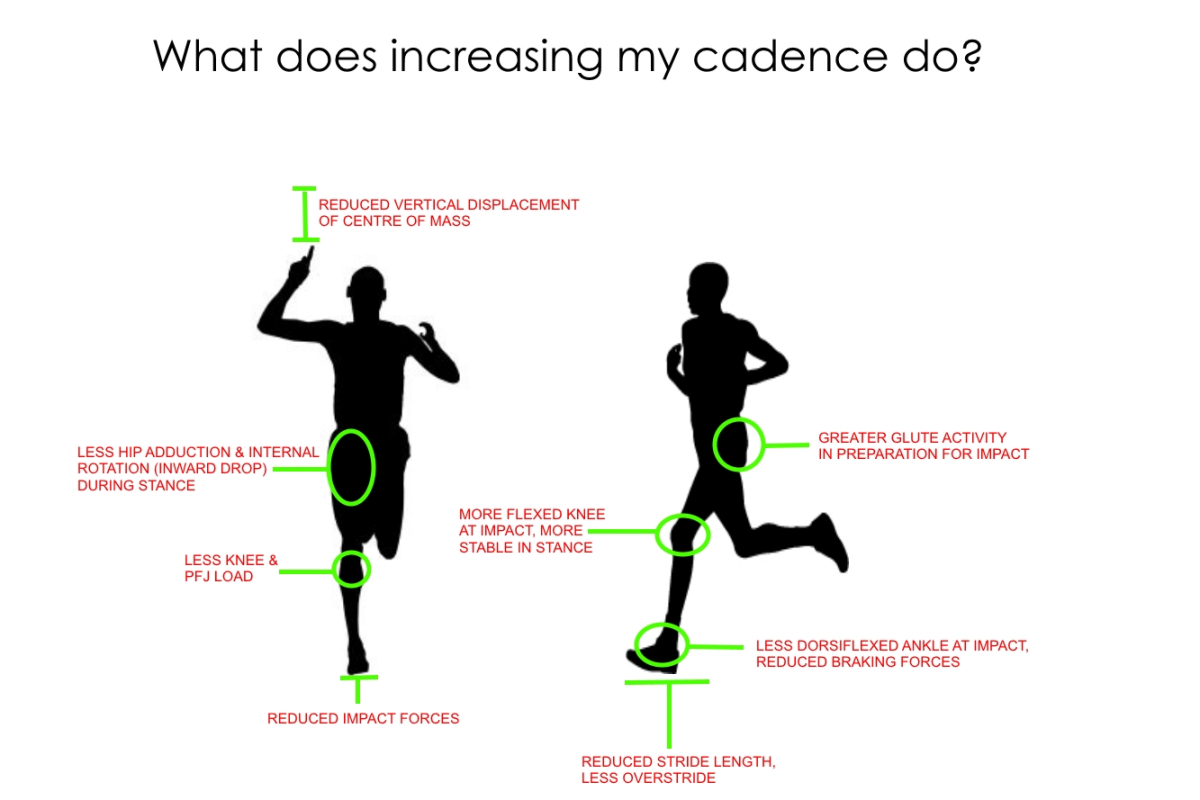By the numbers - Cadence
 Peter Richards
March 31, 2021
Peter Richards
March 31, 2021
 Simple arithmetic. You can currently run 10k in 59 minutes (i.e., under 6 minutes per K). Your current cadence is 172 and your stride length is 1 metre (these are from a real runner!). If you improve your cadence by just 8 strides per minute to 180 (i.e. by 5%). You will run your next 10k nearly 3 minutes quicker (or faster by 480 metres!). You can do the numbers on a marathon distance!
Simple arithmetic. You can currently run 10k in 59 minutes (i.e., under 6 minutes per K). Your current cadence is 172 and your stride length is 1 metre (these are from a real runner!). If you improve your cadence by just 8 strides per minute to 180 (i.e. by 5%). You will run your next 10k nearly 3 minutes quicker (or faster by 480 metres!). You can do the numbers on a marathon distance!
Cadence is simply how often your foot strikes the ground per minute – ‘more efficient’ is around 90 per foot (180’ish both feet). However, 180 isn’t set-in-stone as your biomechanics, muscle strength and mobility play a part. Most runners however naturally select a cadence that is lower than optimum. Lower cadences means over striding, causing lower efficiency, slower pace, and higher injury potential (due to greater time on the ground and impact force). Improving your cadence won’t happen overnight however focusing on your leg turnover during your weekly tempo and long runs and increasing cadence slowly (i.e. about 5% per month), you will see performance improvement. Here are four keys to improving your cadence.
1. Stay smooth, relaxed and ‘run tall’.
2. Know your cadence during long runs and speed workouts. To improve, check your cadence on your smart watch in 'real-time' throughout your long runs and try the runners cue of ‘faster arms = faster legs’ (moving your arms faster will improve your cadence) and maintain the increased turnover even as you fatigue. This cue “faster arms = faster legs” may seem a bit foreign as many new to running assume it's the other way around however the quicker – front to back – you move your arms - the quicker your legs will follow.
3. Extra hack is on long runs listen to high tempo music (Google “music to run to 180 bpm”) set up a playlist and run!
4. Final hack, a treadmill is an excellent way to focus on cadence, run form and pace, with the added advantage you can adjust the speed, even watch yourself in a mirror and be in air conditioned comfort.
Lastly, don’t forget another performance metric, your heart rate, as this can help guide you on tempo and long runs to identify your specific optimal cadence (Note in speed sessions you should naturally have a slightly faster cadence than long slow).
